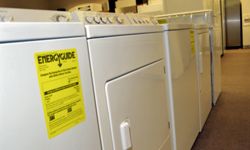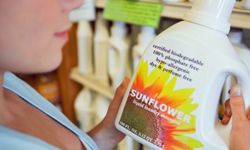Laundry aids like detergent, fabric softeners, bleach and stain remover contain an alphabet soup of chemical ingredients that wash down the drain and into the water supply. A couple of decades ago it was easy to think that all that chemical stuff, like scouring powder, detergent and toilet bowl cleaner, just disappeared down the drain forever. Now we know drinking water can contain trace amounts of hundreds, if not thousands, of artificially introduced chemicals -- everything from cancer drugs to paint solvents. We may need legislative help to regulate some of the effluent in our water, but it's in our power to control the chemicals we decide to use and pour down our home drains.
Choose laundry products that are promoted as biodegradable, green or environmentally friendly. Don't stop there, though. Look for products that are made with plant-based ingredients, and avoid products that contain chlorine bleach or artificial fragrances. Whenever possible, look for product endorsements from environmental organizations you trust.
You might also consider using a few simple homemade options in the laundry: White vinegar makes an effective water softener. Lemon juice is a mild fabric bleach, and you can make a simple and effective laundry detergent using baking soda, borax and a few other common ingredients.


